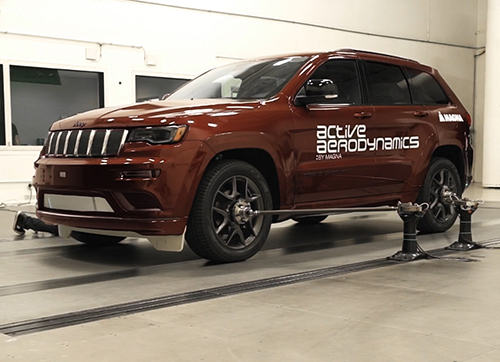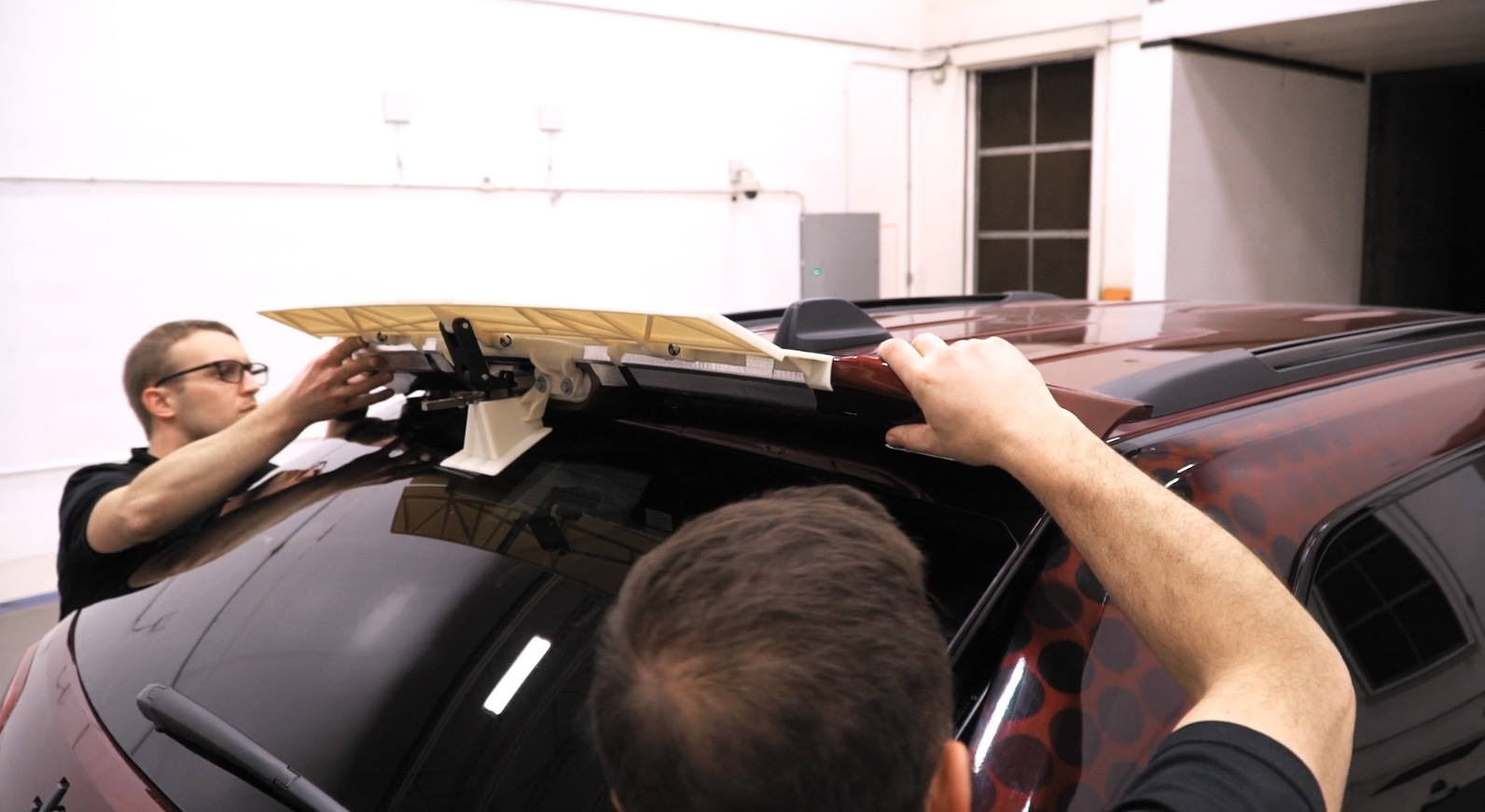The wind tunnel allows engineers to quickly interpret findings and develop solutions for improving fuel economy and reducing CO2 emissions.
“In the past three years, we’ve tested seven Magna products, including an active front wheel deflector, an active rear diffuser and active underbody panels that are in development and ready to hit the market soon,” said Braendon Lindberg, Magna technical manager for the active aerodynamics team. “We’re developing new technology for the auto industry, helping our customers make the best choices – and working towards creating a more sustainable future.”
While computer simulations are valuable in the early stages of development, wind-tunnel testing provides data that drives performance – and results.
“No matter what product we’re bringing to market, it ends up in the wind tunnel to evaluate the real-world benefit,” said Ted Peterson, a Magna design engineer. “It allows us to go from concept to reality as we improve aerodynamics on every aspect of the vehicle, including SUVS, trucks and cars.”





